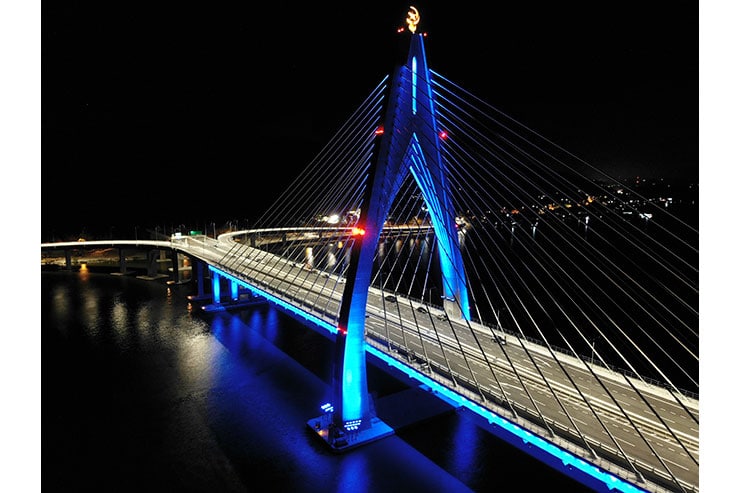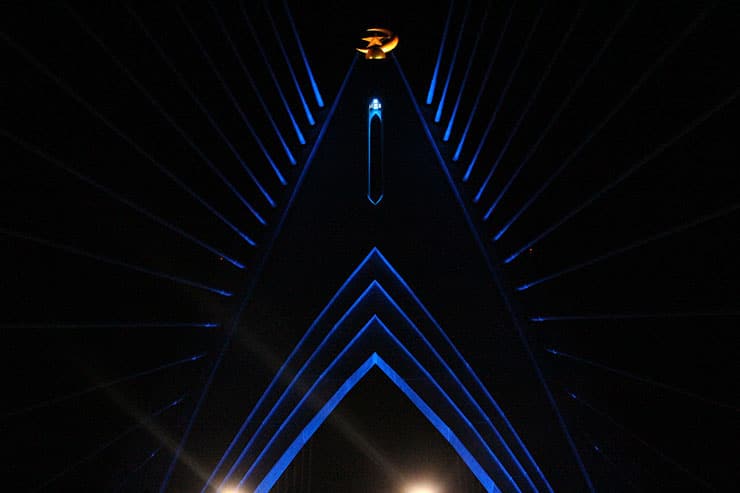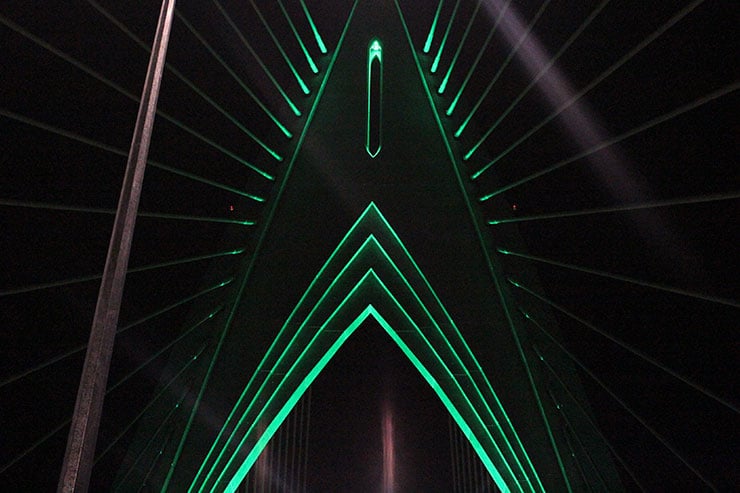This website uses cookies so that we can provide you with the best user experience possible. Cookie information is stored in your browser and performs functions such as recognising you when you return to our website and helping our team to understand which sections of the website you find most interesting and useful.
The Sultan Haji Omar Ali Saifuddien Bridge, Brunei Darussalam
ProjectThe Sultan Haji Omar Ali Saifuddien BridgeLocationBrunei, Brunei DarussalamLighting DesignArup, UKClientMinistry of Development Brunei DarussalamLighting SuppliersPhilips Lighting, Haeden
The Sultan Haji Omar Ali Saifuddien Bridge: Celebrating Brunei’s Cultural Identity Through Light
At a length of 30km, the Sultan Haji Omar Ali Saifuddien Bridge Link in Brunei is the longest bridge in Southeast Asia. The bridge connects Brunei’s Temburong district to the nation’s mainland, and will play an important role in improving people’s lives by driving economic development. Working closely with Brunei’s Ministry of Development (MoD), Arup completed the bridge’s lighting design in March 2020. By capturing the local community’s identity, this sustainable, cost-efficient lighting scheme has helped to position the bridge as a treasured landmark for local residents, while also conveying the rich culture and heritage of Brunei to citizens and visitors alike.
Celebrating Brunei’s cultural identity
With this major bridge project, the MoD’s primary objectives were to bring people together, celebrate Brunei’s identity, and position the nation as a front-of-mind destination for tourists. Recognising this, Arup adopted a holistic approach to express the nation’s social, cultural, and geographic features. For example, the team implemented a dynamic lighting scheme that moves across the bridge in tandem with the passing public. By instilling a sense of motion, this brings the bridge to life and emulates the movement of people between two areas that were previously set apart. With this lighting scheme, the bridge has become a destination that people are drawn towards – whether they are going about their daily routine or visiting on holiday.
Creating a resilient, sustainable design
One of the project’s key challenges was to create a distinct, memorable experience for the bridge’s users and viewers, while simultaneously meeting the project’s sustainable development and cost-reduction aims. To achieve this, Arup mapped the bridge’s architectural elements to define its most significant features, and tested its design ideas through advanced modelling techniques. The team chose to prioritise the bridge’s tower and piers – placing particular emphasis on the crescent in considering its important religious symbolism. This approach allowed Arup to reduce the number of luminaires used, while still creating a compelling design that resonated with the cultural identity of Brunei. As a result, Arup was able to minimise the lighting scheme’s cost, embodied carbon, and future energy consumption.
Arup further improved the bridge’s sustainability by specifying the use of RGBW LED lighting. By enhancing its storytelling capabilities, this provided a flexible platform from which the MoD can visually promote messages. With no need for additional infrastructure, this increased the design’s resilience by enabling the lighting scheme’s colours to be easily reprogrammed in response to future events.
Focusing on user experience
Beyond qualitative value, every step was taken to ensure that the bridge’s lighting design complements its practical function. For instance, Arup identified that glare could be a potential distraction for drivers using the bridge. Therefore, the team carefully positioned the scheme above the sightline of drivers, and only selected luminaires that produced quality lighting. This helped to create the best experience for drivers by ensuring that they could travel comfortably and safely across the bridge, while still providing high levels of illumination for onlookers who wish to enjoy its lighting from afar.






